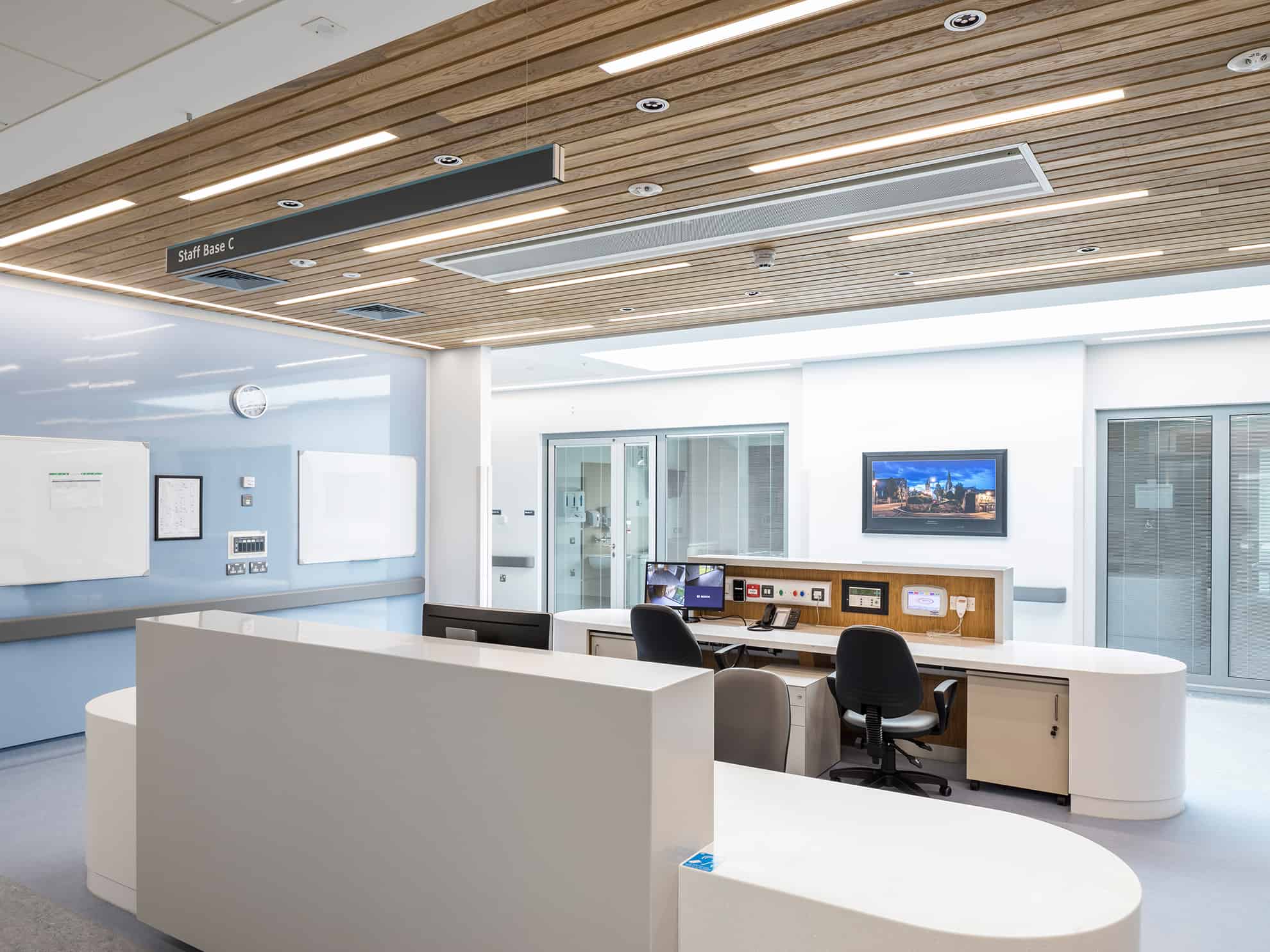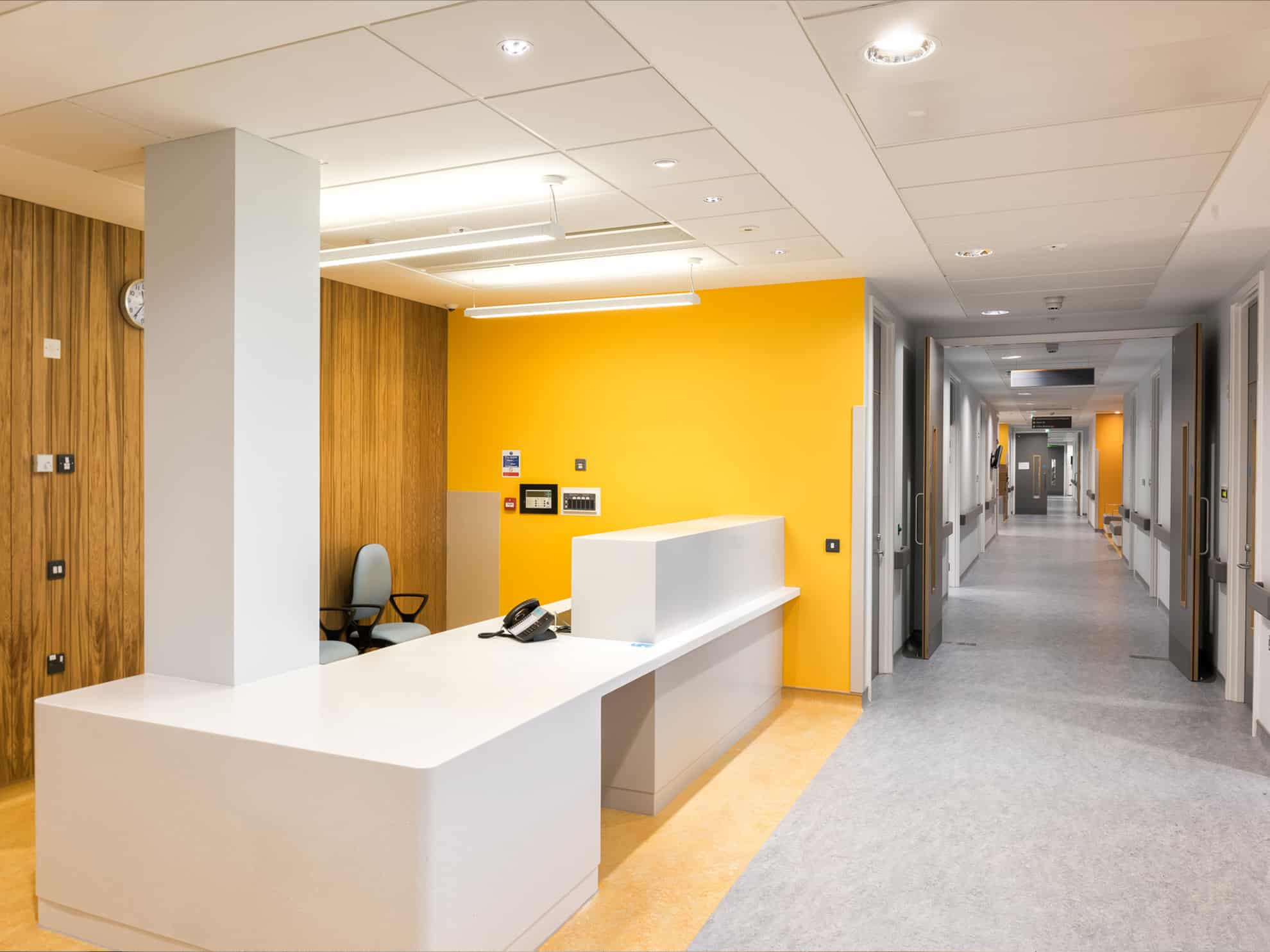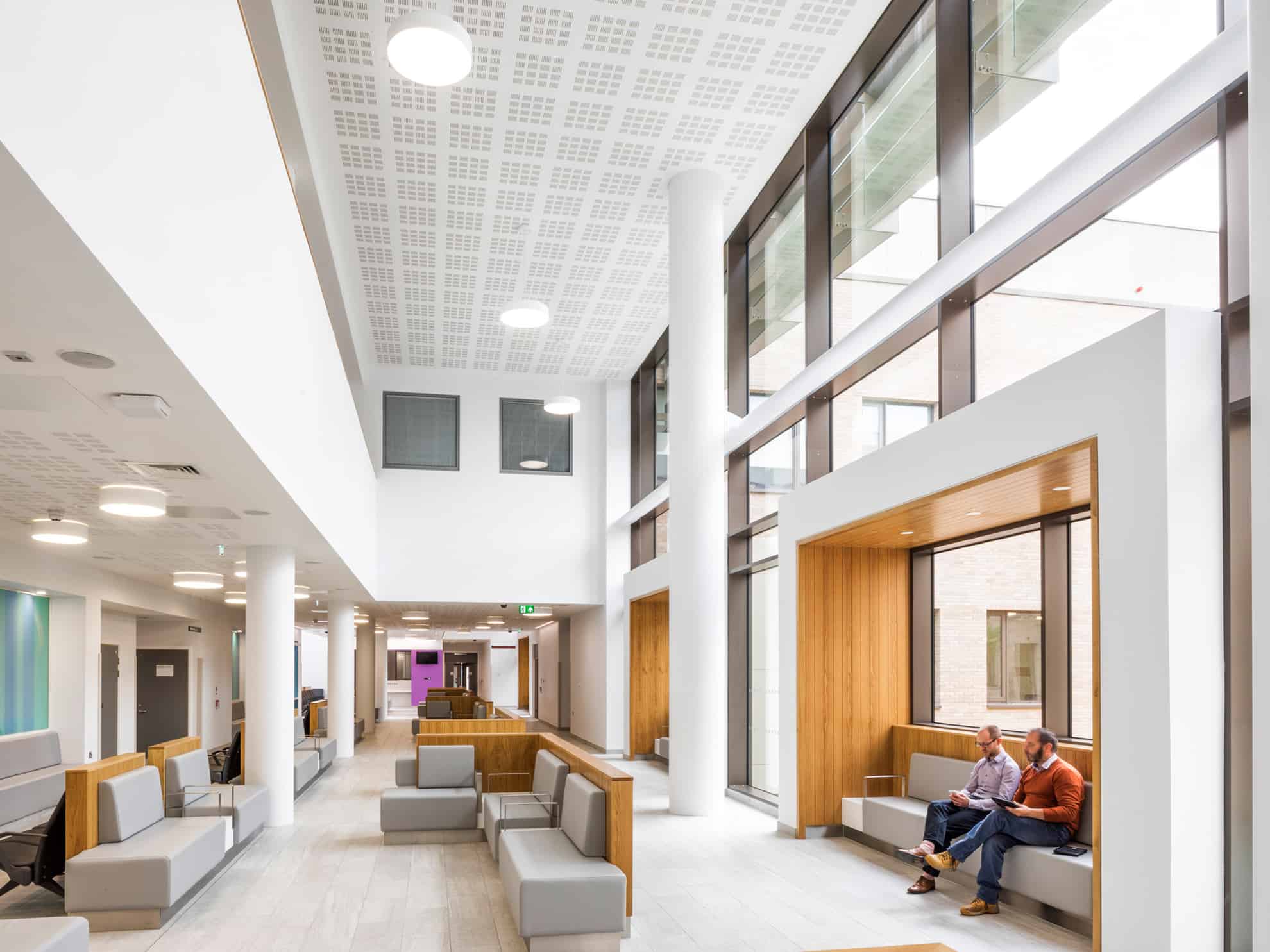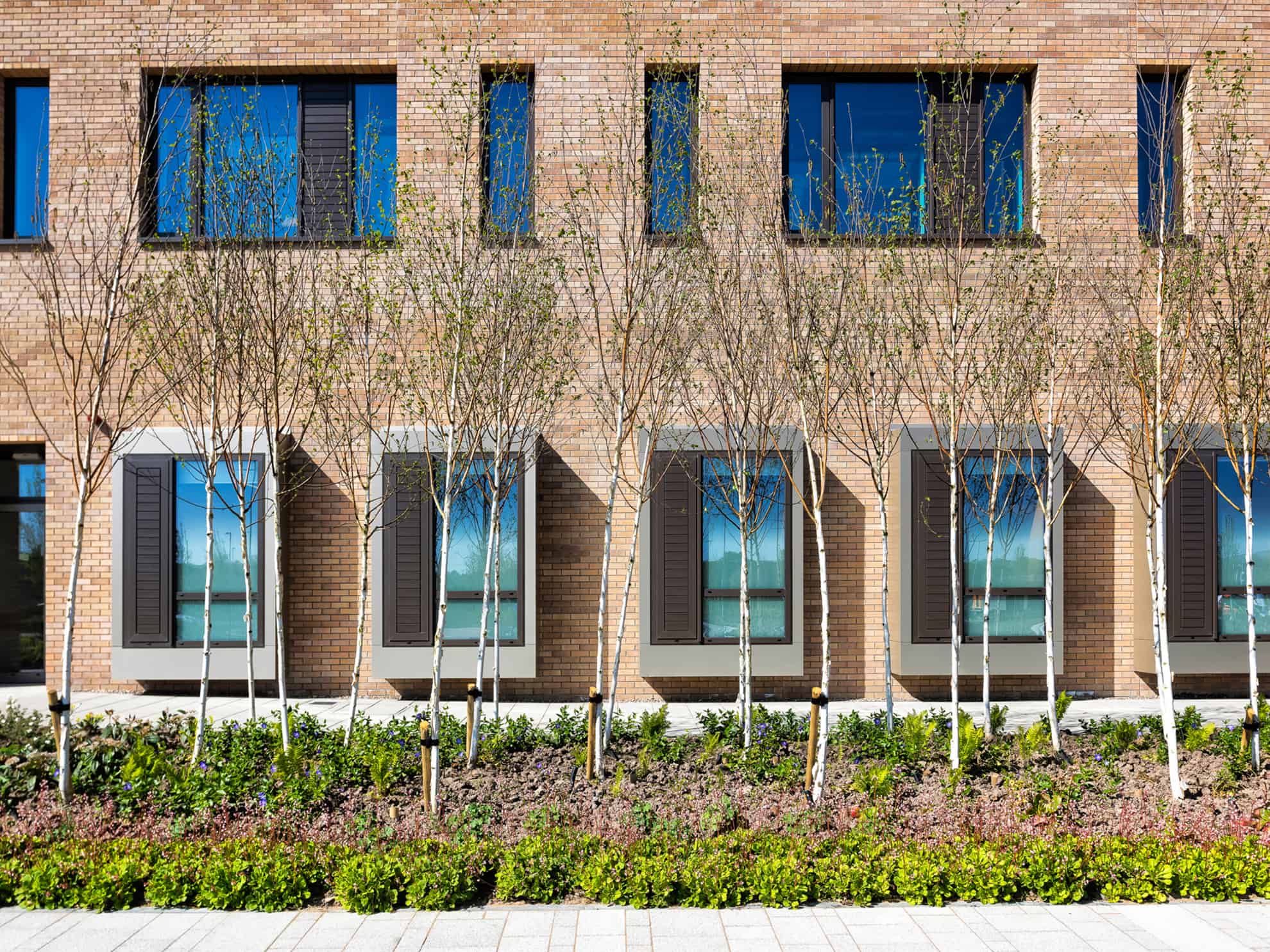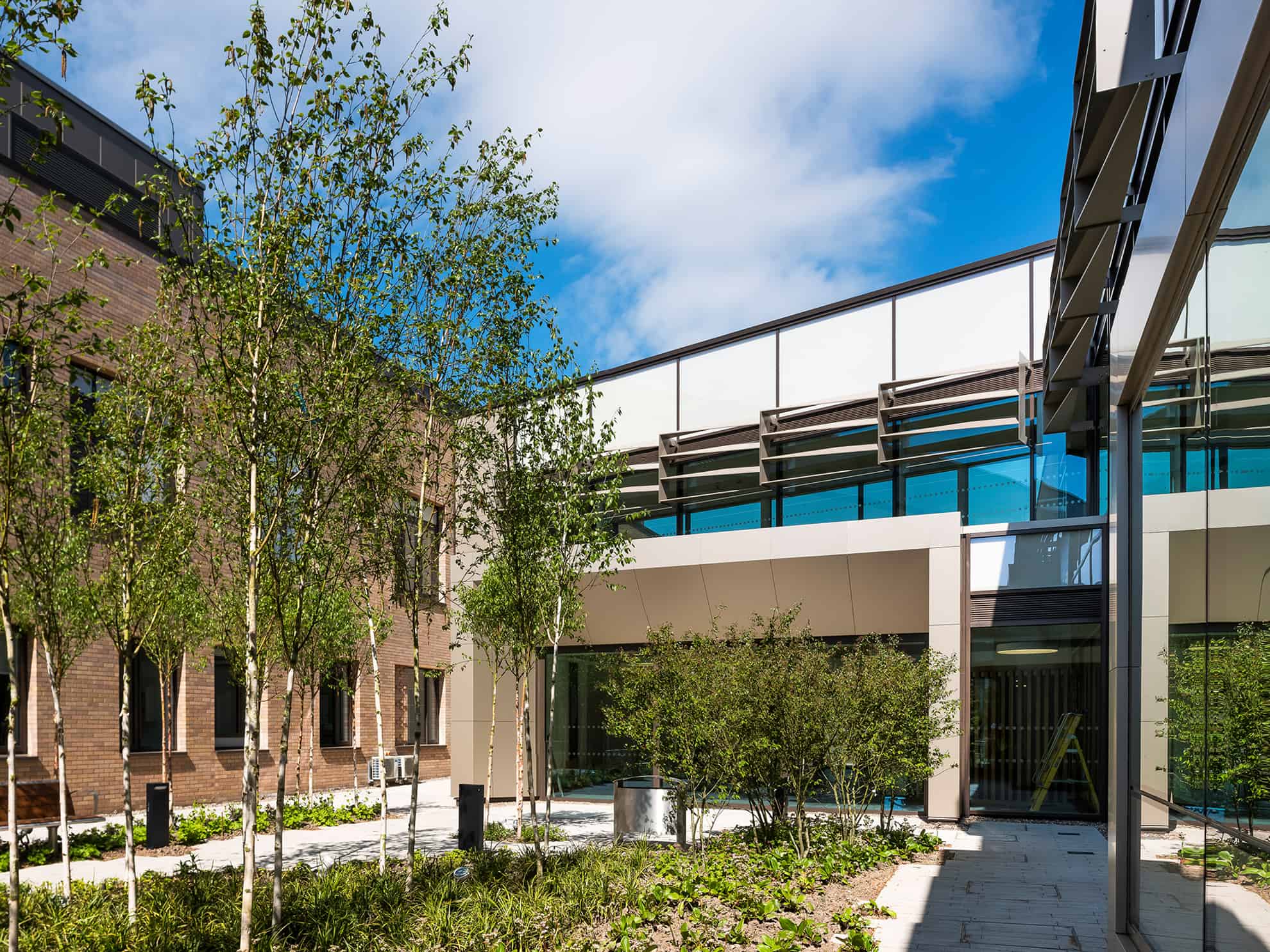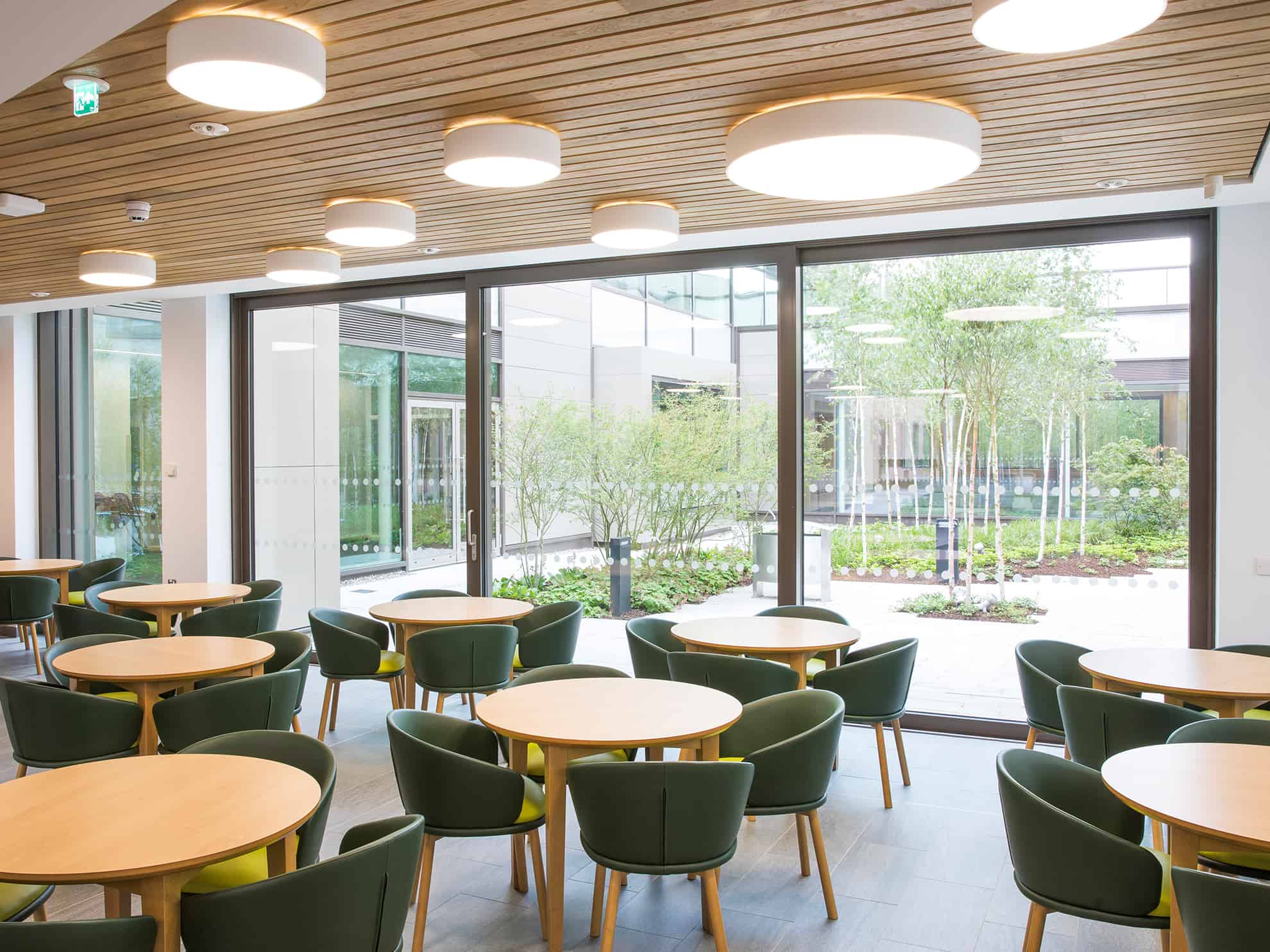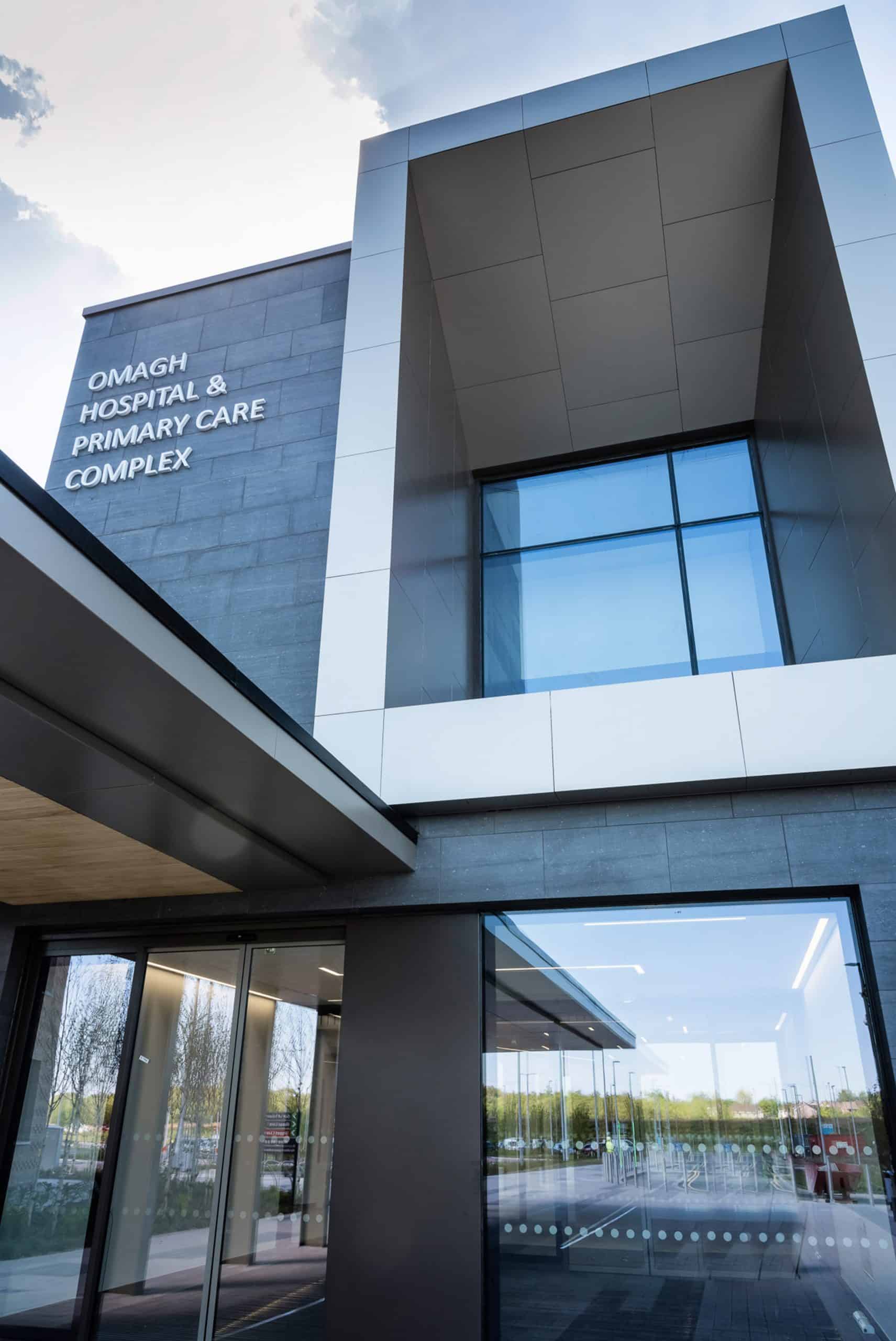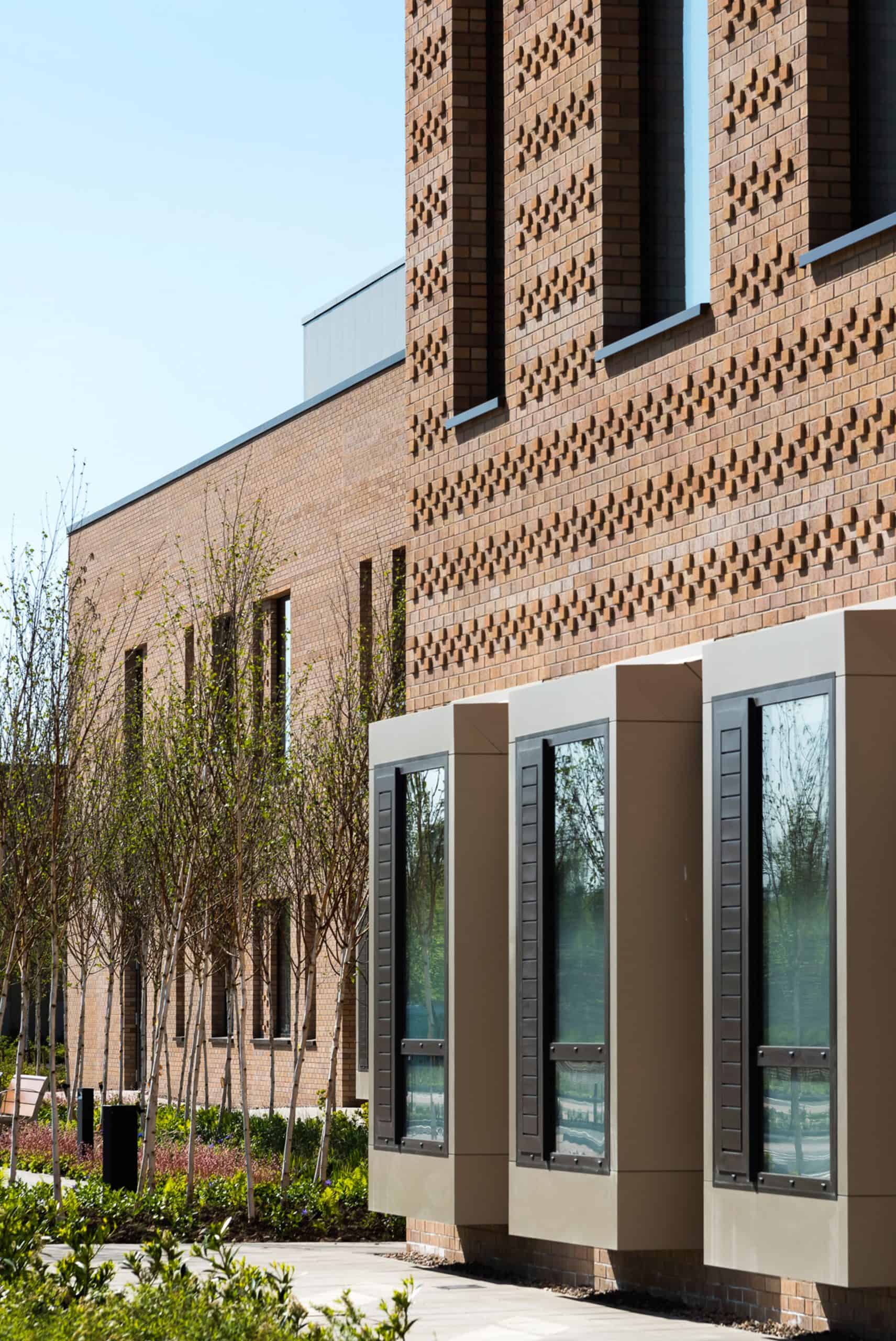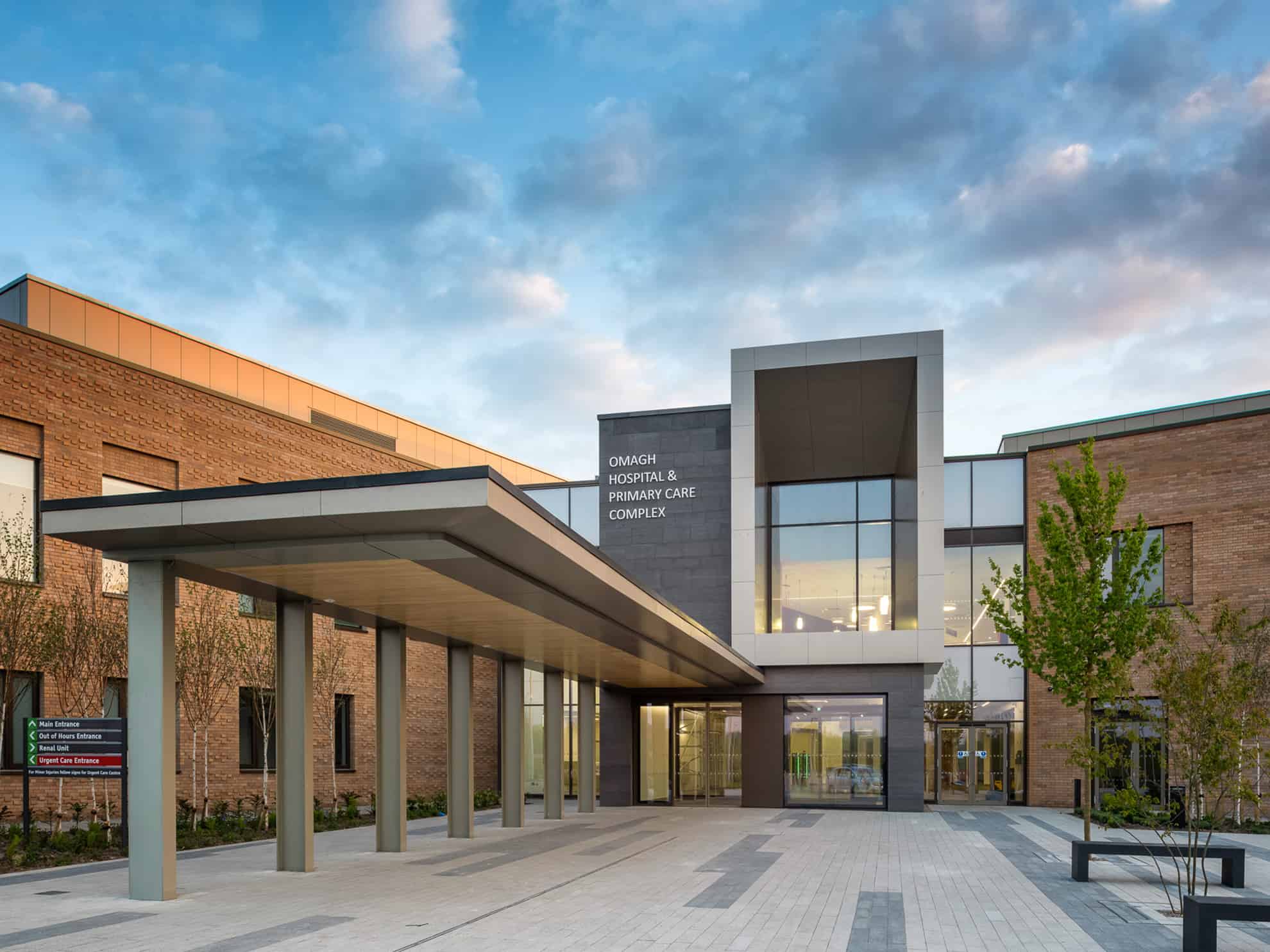Omagh Hospital & Primary Care Complex
The Omagh Hospital and Primary Care Complex is a model of healthcare provision, unique to Northern Ireland and new for the UK and Ireland in how services are delivered. The hospital was designed to provide new services to help tackle the delivery of healthcare in this rural location and to help tackle waiting lists across Northern Ireland. The scheme provides a range of secondary and tertiary hospital facility alongside community healthcare services in one place.
This project was designed in response to a series of quite specific requirements that exist in this region and location. Whilst not unique to Northern Ireland the project has made a significant positive contribution to the local and strategic vision in transforming the delivery of care in this region. The project acknowledges it’s rural setting and delivers efficient care by having carefully considered and appropriate scaled co-location of services.
The scheme supports the region’s speciality centres and relieves pressure on the wider system by acting with a regional ‘step-down’ and ‘support’ role with a community based healthcare focus. The project includes urgent care and treatment, coupled with local ‘state of the art’ assessment, day procedure and out-patient’s departments, all integrated in a building with the general practitioners.
Details
-
Client
Health Estates Investment Group (HEIG)
-
Locations
Omagh, Co Tyrone
-
Size
29,0626 sqft
-
Value
£75m
-
Role
Lead Consultant / Architect
-
Procurement
Traditional
-
Stage
Complete May 2017
Awards
2018: RSUA, Design Award - Winner
2018: RSUA, Integration of Art Award - Winner
2018: RICS, Design through Innovation - Winner
2018: Civic Trust Awards, Medical / Health Service - Regional Finalist
2018: European Healthcare Design, Healthcare Design (over 20,000 sqm) - Winner
2018: European Healthcare Design, Design for Health and Wellness - Highly Commended
2018: RIBA Regional Design Awards, Regional Design Award - Winner
2018: RIAI Awards, Healthcare category - Highly Commended
2017: Civic Trust Awards, Medical / Health Service -Regional Finalist
2017: CEF Construction Excellence Awards, Health Infrastructure Awards - Finalist
2017: Building Better Healthcare Awards, Primary Care Development - Highly Commended
The building balances the technically demanding requirements of a healthcare building whilst delivering a high quality architectural response that includes innovation in the model of care and excellence in building design and building quality in a sensitive rural setting.
The building sits on a green field site on the outskirts of the town and replaces the 118 year old Tyrone County Hospital. A number of physical site constraints have defined the development, the adjacent hospital, the River Drumragh, a new link road and the Donaghanie Road. Visual prominence was a key influence, balancing the desire to showcase the new building and engender an appropriate level of civic pride and prominence whilst not being out of scale with context.
Architecturally the scheme has been conceived with vernacular influences particularly in the approach to the overall scale and mass where the various key components have been grouped into defined and legible elements, linked with light glazed enclosed links; a connecting ‘street’ and a main ‘atrium/foyer’ space. Employing a mix of two and three storey elements, the scheme follows a predominantly linear configuration, along and around a central courtyard and connecting ‘street’. The departments are modelled as a series of ‘pavilions’, each consciously articulated to define its use and aid legibility within the overall building. This approach visually reduces the mass and scale assists in the overall articulation and in turn enables a range of views ‘to’, ‘from’ and ‘between’ the main blocks to the internal landscaped courtyards and beyond to the external surroundings, enhancing the user and visitor experience.
Through considered design a therapeutic environment has been created for all users, both inside and outside the building.
The hospital departments are arranged around two key public entrances, the ‘main’ entrance at the Foyer and main reception and ‘secondary’ entrance, located adjacent the Urgent Care. The main entrances are connected by a ‘hospital’ street’ on two levels with courtyards and link corridors which both connect and define the adjacent spaces.
The design approach of a series of legible building elements connected by a ‘street’ and ‘foyer’ assists in the way-finding and orientation (a design parameter) to and within the scheme; this principle is further extended to the individual departments.
All areas are accessible from either of the entrances During the day it is envisaged that the majority of visitors will arrive at the main entrance; where the main reception/ information point, café, retail and waiting are located, around what is an active space, with a range of spaces of differing height, functions and views.
The distinction between ‘inside and outside’ is being strengthened with the physical landscaping and visual links being extended from the site into and through the building ’breaks’, in turn re-in forcing the definition of the ‘pavilions’.
The courtyards assist in the building orientation as an extension of internal space to the exterior and improving the overall sense of well-being; providing opportunities of overlooking from adjacent waiting spaces and from the hospital street.
The interiors have a range of spaces that maximise the benefit of natural light and views into courtyards and over the surrounding rivers and mountains.
Ward areas contain single en-suite rooms for a mix of patients in recovery and rehabilitation as well as patients receiving palliative care. The wards are arranged in clusters of ten rooms around a central ward base.
The approach to the design has carefully considered the balance of patient observation with privacy and the ability to have staff and patient control to suit a range of scenarios.
Departments have been designed to break down the barriers between traditional clinical and patient areas by introducing seating/break out areas that encourage a sense of community to create a relaxed healing environment.
Patients are also remarking on the benefits of the new building. The new hospital has given the NHS staff of Omagh and its patients, much to be enthusiastic about and I look forward to helping deliver health care to this area, in this excellent new building for years to come.
 close
close
